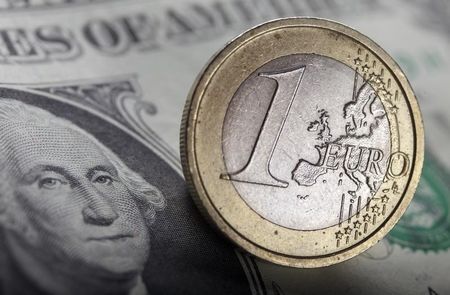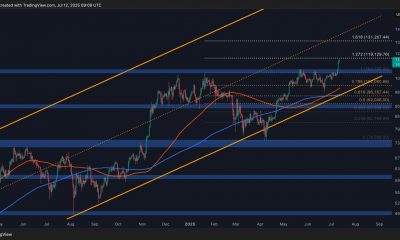Forex
Dollar on back foot; euro awaits key inflation release

Investing.com – The US dollar slipped lower Tuesday, heading towards a one-week low following a report that President-elect Donald Trump’s tariffs could be less aggressive, while the euro gains ahead of key inflation data.
At 04:25 ET (09:25 GMT), the Dollar Index, which tracks the greenback against a basket of six other currencies, traded 0.3% lower to 107.775, after falling overnight to its weakest since Dec. 30.
Dollar remains on backfoot
The dollar has been on the backfoot since the Washington Post released a report on Monday stating that the new Trump administration was exploring plans to limit tariffs to sectors seen as critical to US national or economic security.
President-elect Donald Trump has denied the report in a post on his Truth Social platform, but the dollar has still struggled to make headway.
“The dollar’s failure to recover all its intraday losses on Monday likely indicates two factors: first, the market had been heavily favoring the dollar following a nearly continuous three-month rally; second, a view that there is no smoke without fire and that the contents of that Washington Post report sounded sensible,” said analysts at ING, in a note.
There is a lot of US economic data to digest Tuesday, including for December and the November , ahead of Friday’s release of the closely watched for further clarity on the health of the world’s largest economy.
“It is unlikely investors will want to consider actively selling the dollar ahead of Trump’s inauguration on 20 January on speculation over softer tariffs – but we could see a little more rebalancing of FX positioning and a little more dollar consolidation in the interim,” ING added.
Euro climbs ahead of inflation data
In Europe, rose 0.4% to 1.0431, climbing once more after jumping to a one-week high on Monday.
Attention turns Tuesday to the release of the latest inflation data out of the eurozone – the last data on regional prices before the European Central Bank’s next meeting on Jan. 30.
The for December is expected to have risen 2.4% in December on an annual basis, speeding up from 2.2% in November.
However, data released from Spain and Germany showed faster-than-expected pickups in inflation, while France surprised to the downside.
Investors are currently looking for the ECB to ease interest rates by around 100 basis points in the first half of 2025, and any signs that inflation is easing further would give the ECB scope to loosen policy more, weighing on the single currency.
traded 0.4% higher to 1.2569, following sharp gains overnight, despite data showing British house prices dropped unexpectedly last month for the first time since March.
Mortgage lender Halifax said fell 0.2% in December after a 1.2% rise in November, and were 3.3% higher on the year – lower than the 4.2% expected.
The held interest rates unchanged last month after consumer prices rose above target, and is expected to proceed cautiously with further rate cuts this year.
Yuan remains weak
In Asia, rose 0.1% to 7.3325, with the Chinese currency continuing to underperform, hitting its weakest level in 17 years on Monday.
While the currency did recover some ground, it remained fragile, with new US. restrictions against Chinese companies adding more pressure on the currency.
slipped slightly to 157.56, after earlier hitting its highest level in nearly six months.

 Forex3 years ago
Forex3 years agoForex Today: the dollar is gaining strength amid gloomy sentiment at the start of the Fed’s week

 Forex3 years ago
Forex3 years agoUnbiased review of Pocket Option broker

 Forex3 years ago
Forex3 years agoDollar to pound sterling exchange rate today: Pound plummeted to its lowest since 1985

 Forex3 years ago
Forex3 years agoHow is the Australian dollar doing today?

 Cryptocurrency3 years ago
Cryptocurrency3 years agoWhat happened in the crypto market – current events today

 World3 years ago
World3 years agoWhy are modern video games an art form?

 Commodities3 years ago
Commodities3 years agoCopper continues to fall in price on expectations of lower demand in China

 Economy3 years ago
Economy3 years agoCrude oil tankers double in price due to EU anti-Russian sanctions



























